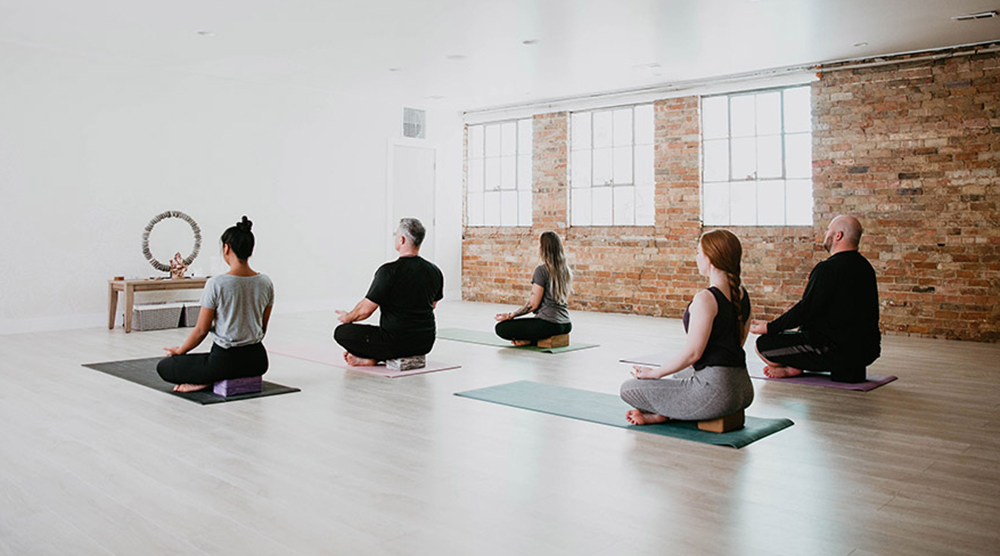
When most people think of yoga, they think of physical poses. While they may understand that there’s more to it than just poses, do most people really know what that means? Asana, the physical practice is the third of the Eight Limbs of Yoga. What comes before?
The first limb is called yama. Yamas are moral and ethical precepts. They’re guidelines for living in harmony with our world—our work, lifestyle and relationships. The first of these is ahimsa (non-harming). The other four yamas are refinements of non-harming. Ahimsa is really the basis of all yoga practice, including asana and meditation.
The yamas are foundational for practicing yoga in our everyday lives. But we can also practice them on the yoga mat. In this post, I’d like to offer some ideas for practicing the second yama, satya (truthfulness) on your yoga mat.
Why Do We Strive in Our Yoga Practice?
In my opinion, the greatest challenge for us as yoga practitioners is to understand that asana practice is a completely different paradigm from what we usually think of as physical practice. We usually connect physical practice with competitive sports—the “ball” games such as baseball, basketball, etc.; or individual sports, such as biking, running, skiing, swimming, etc. We’ve learned that exercise should always get our hearts pumping.
These forms of physical practice are all completely legitimate—and fun. They keep our bodies moving, which science has proven, can help keep our minds sharp as well. Movement is essential for keeping us healthy.
They also carry with them the idea of competition—either in comparison to others, or to our own “personal bests.” But yoga asana was originally conceived, and practiced for centuries, as a way to calm the nervous system to help prepare they body and mind for meditation.
Yoga’s Original Non-Competitive Intent
The traditional framework was the antithesis of competition. It was about finding contentment in the present reality of your practice, no matter what it looks like. It wasn’t until the British brought Western gymnastics to India when they colonized the country in the 19th century that there was even a shred of competitiveness associated with asana practice.
As Westerners our conditioning teaches us to compete, with ourselves and others. As a result, we often practice asana within this framework. It’s not intentional. It’s just conditioning. So we often think that the more extreme our poses, the better. We practice from the “no pain, no gain” mindset.
This, of course, often leads us to practicing poses our bodies aren’t designed for. Or we end up refusing aids such as yoga props, that could help us gain the benefits of certain asanas, without the potential for injury.
The Truth About Comparing
In order to practice in a way that honors our bodies and minds, we first have to be truthful to ourselves. We have to be truthful about our bodies’ particular strengths and limitations. And we need to honor the essential truth that we are all different.
We come into the world with different physical structures. We also spend decades practicing certain physical patterns. So no two people’s poses will look the same. Comparing your pose to someone else’s is not productive.
Another truth: Our bodies change over time. Sometimes this means that certain poses may become more accessible. Sometimes it means that certain poses that used to seem like a good idea may become unhealthy for us to practice now. So even comparing our practice to what we did last week or five years ago is not helpful.
It’s important that we understand these truths, so that our practice can nourish our bodies and minds and so that it can grow and change with us. This is where satya comes in.
Satya on the Yoga Mat
So how do we practice satya on the mat? Here are some ideas to explore. Feel free to come up with your own ways of practicing satya.
- Be mindful: This is the basis of practicing satya. We need to pay attention to what’s happening in our practice, moment to moment. Here are some questions you can ask yourself while you’re practicing: How’s my breathing? Is it deep and continuous, or is it restricted and shallow? Is there pain anywhere in my body?
- Back off: If your breathing is shallow or restricted, do less. The breath is the animating force in the body. It’s carries our prana, our life force. First and foremost, asana practice should be life supporting. If your breathing is compromised, your practice is not life supporting. Also, asana practice should not be painful. If there’s pain, leave the pose or do less. There’s no fancy pose that’s worth sacrificing your body for. Be honest. Is this pose, in this moment, serving you?
- Use props: Many people think that yoga props are “crutches” for “beginners” who can’t do the “real” pose. Actually, yoga props allow us to practice with integrity. Even the most flexible people can benefit from using props sometimes. A well-placed yoga block under the hand in Trikonasana (Triangle Pose) can transform a restricted, misaligned pose to an expansive, life-supporting asana.
Practicing Satya is “Advanced” Practice
When I see a student opting to use props, choosing to back off or even skipping a pose entirely, I consider this to be “advanced” practice. These students are practicing satya. Instead of ignoring signals and putting their bodies and minds in harm’s way, they are honoring the truth of the moment. This comes from a deeper understanding of what practice is actually about—the integration of body and mind.
Comparing and competing doesn’t honor the truth of the moment. A mindful practice honors what is true here and now. Then satya can guide our choices. Practicing satya on the mat can give us the tools to practice it in the rest of our lives.
